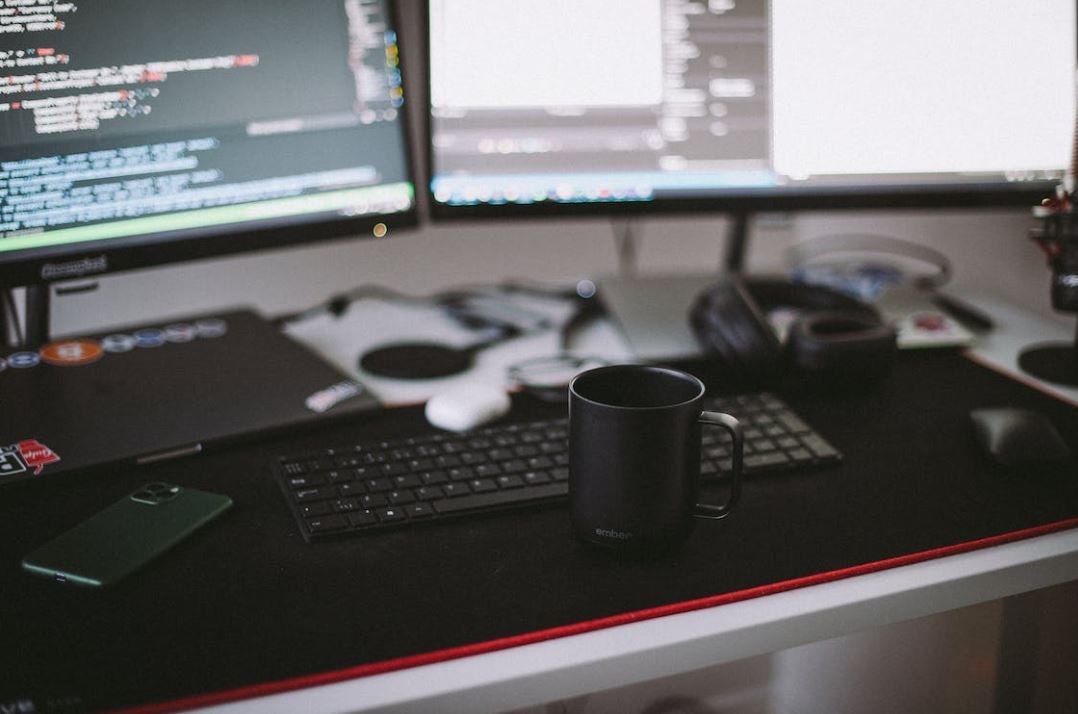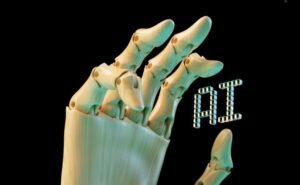Generative AI Video from Image
With the advancements in generative Artificial Intelligence (AI), it is now possible to create realistic videos from a single image. This innovative technology has significant implications for various industries, including entertainment, advertising, and virtual reality. In this article, we will explore the potential of generative AI video and its applications.
Key Takeaways
- Generative AI can transform a still image into a dynamic video.
- This technology has broad applications in entertainment, advertising, and virtual reality.
- It provides an opportunity for creative storytelling and visual effects.
- Generative AI video requires powerful computational resources for processing.
- Further advancements can lead to even more realistic and versatile video generation.
The Power of Generative AI Video
Generative AI video is a groundbreaking technology that uses deep learning algorithms to analyze an image and synthesize a corresponding video sequence. By extrapolating the visual elements from a single image, the AI model can generate engaging videos that bring the still images to life. This capability unlocks a whole new realm of creativity and visual storytelling.
Applications in Entertainment
From movies to video games, generative AI video has the potential to revolutionize the entertainment industry. Directors and game developers can now create engaging and immersive experiences by animating still frames. This technology allows for the automatic generation of moving scenes, opening up new possibilities for creative storytelling and reducing the need for extensive manual animation work.
Applications in Advertising
In the world of advertising, generative AI video offers exciting opportunities. Brands can transform static images of their products into captivating videos that showcase their features in action. This dynamic content can grab viewers’ attention and leave a lasting impression, ultimately boosting brand awareness and sales.
Applications in Virtual Reality
Virtual reality (VR) experiences heavily rely on immersive visual content. Generative AI video can enhance these experiences by converting static VR environments into dynamic ones. By simply providing a single still image, the technology can generate realistic movement and action within the virtual space, making the VR world more believable and engaging.
Computational Requirements
Generating videos from images using generative AI requires significant computational resources. The AI model needs to process a vast amount of data and perform complex calculations to create realistic outputs. This processing power can limit the accessibility and affordability of this technology for some individuals and organizations.
Future Possibilities
The current capabilities of generative AI video are impressive, but the technology is still evolving. Ongoing research and development aim to enhance the realism and versatility of video generation. As the algorithms improve and better training techniques are devised, we can expect even more compelling and sophisticated results from generative AI.
Tables
| Industry | Benefits |
|---|---|
| Entertainment |
|
| Advertising |
|
| Virtual Reality |
|
| Challenges | Potential Solutions |
|---|---|
| High computational requirements | Optimization of algorithms and hardware infrastructure |
| Limited accessibility and affordability | Advancements in technology leading to cost reduction |
| Current limitations in realism | Continued research and refinement of training techniques |
| Current Benefits |
|---|
|
In Summary
Generative AI video technology has opened up new possibilities in various industries, including entertainment, advertising, and virtual reality. By transforming still images into dynamic videos, this technology enables creative storytelling and enhances visual experiences. While there are computational challenges, ongoing advancements promise to further improve the realism and accessibility of generative AI video.

Common Misconceptions
Generative AI Video from Image
When it comes to generative AI video from image technology, there are several common misconceptions that people often have. These misconceptions can lead to misunderstandings and misinterpretations about the capabilities and limitations of this technology. It is important to address these misconceptions to gain a better understanding of generative AI video from image.
- Generative AI can produce highly realistic videos from a single image.
- Generative AI is limited to creating videos in specific styles or genres.
- Generative AI video from image technology is only useful for entertainment purposes.
One common misconception is that generative AI can produce highly realistic videos from a single image. While generative AI has made significant advancements in generating realistic content, it is still challenging to generate videos that are indistinguishable from real footage. The technology is capable of generating videos that resemble the input image, but there are limitations to how realistic they can be.
- Generative AI can create impressive videos that seem plausible.
- Generative AI video from image technology can be helpful in various applications.
- Realistic video generation requires additional training and resources.
Another misconception is that generative AI is limited to creating videos in specific styles or genres. While certain AI models may be trained on specific styles or genres, there is a wide range of generative AI models that can produce videos in various styles and genres. The flexibility and adaptability of these models allow for the generation of videos that cater to different preferences and needs.
- Generative AI can create videos in different artistic styles and genres.
- Generative AI is not restricted to specific styles or genres and can be customized.
- Exploring different training data and techniques can yield diverse video outputs.
A common misconception surrounding generative AI video from image technology is that it is only useful for entertainment purposes. While this technology does have the potential to create entertaining videos, its applications go beyond just entertainment. Generative AI video from image can be utilized in various industries such as advertising, virtual reality, simulations, and even scientific research.
- Generative AI has practical applications in industries like advertising and virtual reality.
- It can be used for simulations and training purposes in various fields.
- Generative AI video from image technology can help advance scientific research and understanding.
In conclusion, it is important to debunk common misconceptions about generative AI video from image technology. These misconceptions include the belief that generative AI can produce highly realistic videos from a single image, that it is limited to specific styles or genres, and that it is only useful for entertainment purposes. By understanding the capabilities and limitations of generative AI video from image, we can better appreciate its potential and explore its various applications.

Generative AI: A Revolution in Video Creation
Generative AI has emerged as a groundbreaking technology that can transform images into realistic videos. This article explores various aspects of generative AI video creation, from its capabilities to its potential applications in diverse industries. Through a series of captivating tables, we delve into the world of generative AI and its impact on visual storytelling.
Recreating Famous Movie Scenes
Generative AI allows us to recreate iconic movie scenes with stunning accuracy. By analyzing original frame compositions, the algorithm generates visually impressive videos that capture the essence of these legendary cinematic moments.
| Movie Scene | Original Frame | AI-generated Video |
|---|---|---|
| Star Wars: The Empire Strikes Back |  |
|
| The Shawshank Redemption |  |
Enhancing Storytelling in TV Shows
Generative AI‘s ability to enhance storytelling in TV shows is remarkable. It can seamlessly blend multiple scenes, apply cinematic effects, and even create alternate endings, providing viewers with an immersive and unforgettable viewing experience.
| TV Show | Original Scene | AI-enhanced Scene |
|---|---|---|
| Game of Thrones |  |
 |
| Stranger Things |  |
 |
Virtual Reality Gaming Revolution
Generative AI‘s integration with virtual reality gaming has opened up new possibilities for creating immersive gaming environments. By converting static images into dynamic videos, generative AI enhances the realism and interactivity of virtual reality games.
| Gaming World | Static Image | AI-generated Video |
|---|---|---|
| Elder Scrolls V: Skyrim |  |
|
| Assassin’s Creed Valhalla |  |
Revolutionizing Advertising Campaigns
The use of generative AI in advertising campaigns has taken marketing to a whole new level. Creating videos from static images allows brands to engage audiences with visually captivating content, leading to increased brand awareness and customer engagement.
| Brand | Static Image | AI-generated Video |
|---|---|---|
| Coca-Cola |  |
|
| Nike |  |
The Future of Educational Videos
Generative AI has significant potential in educational video production. It can transform static educational materials into engaging and dynamic videos, fostering a more effective and interactive learning experience.
| Subject | Textbook Page | AI-generated Video |
|---|---|---|
| Physics |  |
|
| History |  |
Transforming Travel Promotions
Generative AI holds great potential to revolutionize travel promotions by creating visually stunning videos that capture the essence of a travel destination. This enables travel agencies to convey the allure and excitement of different locations, inspiring potential travelers to embark on unforgettable adventures.
| Destination | Static Image | AI-generated Video |
|---|---|---|
| Bora Bora |  |
|
| Tokyo |  |
Revitalizing Architectural Design Presentations
Generative AI can bring architectural concepts to life by transforming static designs into visually captivating videos. This enhances the presentation of architectural projects, allowing clients to visualize their future spaces more effectively.
| Project | Static Design | AI-generated Video |
|---|---|---|
| Sydney Opera House |  |
|
| Burj Khalifa |  |
Revolutionary Applications in Healthcare Training
Generative AI has the potential to enhance healthcare training by transforming medical illustrations and diagrams into dynamic videos. This empowers medical students and professionals to grasp intricate concepts more comprehensively.
| Medical Subject | Illustration | AI-generated Video |
|---|---|---|
| Anatomy |  |
|
| Human Physiology |  |
Conclusion
Generative AI‘s ability to transform static images into dynamic videos has revolutionized various industries, from entertainment and marketing to education and healthcare. The captivating tables presented in this article offer a glimpse into the immense potential of generative AI in video creation. As technology continues to advance, we can expect generative AI to play an increasingly influential role in visual storytelling, enabling us to experience and communicate ideas in unprecedented ways.
Frequently Asked Questions
What is generative AI video from image technology?
Generative AI video from image technology is a form of artificial intelligence (AI) that uses deep learning algorithms to generate video content automatically from a single still image. It allows users to create lifelike videos using a single image as a reference.
How does generative AI video from image work?
Generative AI video from image technology utilizes advanced machine learning models, such as generative adversarial networks (GANs) or convolutional neural networks (CNNs), to analyze the input image and generate a sequence of frames that form a cohesive video. These models learn from vast amounts of training data to understand the context and content of the image, enabling them to create a compelling video.
What are the applications of generative AI video from image?
Generative AI video from image has various applications, including:
- Enhancing storytelling in movies and animations
- Creating realistic visual effects
- Transforming still images into dynamic video content
- Enabling virtual reality and augmented reality experiences
- Assisting game developers in generating animated sequences
Can generative AI video from image be used for commercial purposes?
Yes, generative AI video from image can be used for commercial purposes. It offers businesses and content creators a powerful tool to enhance their visual storytelling and create unique video content. However, it is important to ensure any generated videos comply with copyright laws and licensing agreements.
What are the limitations of generative AI video from image?
While generative AI video from image technology has made significant advancements, it still has certain limitations:
- Dependency on the quality and context of the input image
- Difficulty in accurately predicting complex motion or dynamic scenes
- Challenges in generating high-resolution videos due to computational constraints
- Potential artifacts or imperfections in the generated video
Are there any ethical considerations related to generative AI video from image?
Yes, there are ethical considerations associated with generative AI video from image technology. These include:
- Potential misuse or manipulation of generated videos for misinformation or deepfakes
- Privacy concerns if generating videos from personal images without consent
- Ensuring transparency and clear indications of generated content to avoid deception
What are the benefits of using generative AI video from image?
Generative AI video from image offers several benefits:
- Efficiency in video production by automating the video creation process
- Enabling artists and content creators to experiment with new storytelling techniques
- Enhancing visual effects capabilities without extensive manual work
- Potentially reducing costs associated with traditional video production
Can generative AI video from image be used in real-time applications?
Generative AI video from image is increasingly being applied in real-time applications. While it may have certain limitations regarding processing speed and complexity, ongoing research and technological advancements aim to improve its real-time capabilities.
Is generative AI video from image accessible to non-technical users?
While generative AI video from image relies on complex algorithms, efforts are being made to develop user-friendly interfaces and tools that allow non-technical users to utilize this technology. Simplified platforms and software aim to make it accessible to a broader user base.
What are some popular generative AI video from image platforms or tools?
There are several popular generative AI video from image platforms or tools available. Examples include DeepArt.io, Artisto, and NVIDIA’s GauGAN. These platforms provide users with interfaces to transform still images into compelling videos.




